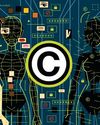Prøve GULL - Gratis
Education in the U.S.Needs Facts, Not Ideologies
Scientific American
|July/August 2025
One hundred years after the Scopes trial, religious ideologues are still trying to supplant evidence-based curricula with myths, to the detriment of a well-informed society
-
IN JULY OF 1925 hundreds of reporters and other onlookers crowded into a sweltering courtroom in Dayton, Tenn., to watch what would become widely recognized as the trial of the century. Against a backdrop of societal anxieties over cultural upheaval, the Scopes “monkey trial,” as it was dubbed in the press, pitted the authority of the Bible against the evidence-based science behind evolution. At the center of the trial was John Scopes, a 24-year-old teacher accused of teaching human evolution at a public school, in violation of a religiously motivated state law against it.
Opinions on who won the case differ depending on whom you ask. Technically the defense lost—the jury found Scopes guilty of breaking the law, and the judge ordered him to pay a $100 fine (a ruling that was later overturned on a technicality). But defense attorney Clarence Darrow’s arguments raised public awareness of the evidence supporting evolution and the threat that religious dogma posed to science education, academic freedom and individual liberty. Still, for decades after the trial, discussion of evolution in high school textbooks declined, and in many cases, it was omitted altogether.
One hundred years after that famous trial, education in the U.S. is still under attack from the same antiscience political forces, which are continuously using state and federal courts to assail the roles of critical thinking, inquisition and curiosity in schools in favor of religious instruction. Those who value public education must redouble their efforts to fight those forces.
Denne historien er fra July/August 2025-utgaven av Scientific American.
Abonner på Magzter GOLD for å få tilgang til tusenvis av kuraterte premiumhistorier og over 9000 magasiner og aviser.
Allerede abonnent? Logg på
FLERE HISTORIER FRA Scientific American
Scientific American
Will We Run Out of Rare Earth Elements?
These valuable but difficult-to-extract metals are increasingly important to modern life
1 mins
December 2025

Scientific American
Copyright Laws Can Stop Deepfakes
The U.S. should give its residents rights to their own face and voice
4 mins
December 2025

Scientific American
50, 100 & 150 Years
“The list of first-aid procedures that the medical profession encourages laypeople to undertake is short because of concern that tactics applied in ignorance may do more harm than good.
3 mins
December 2025

Scientific American
Dramatic Atmosphere
Exoplanet TOI-561 b has air where none should persist
2 mins
December 2025

Scientific American
The Mother of Depressions
Postpartum depression is a leading cause of death among new mothers. A new type of drug offers better, faster treatment
16 mins
December 2025

Scientific American
Going Rogue
A massive study may improve the prediction of dangerous rogue waves
3 mins
December 2025

Scientific American
Phages Caught Sleeping
Bacteria use hibernating viruses to immunize themselves
2 mins
December 2025
Scientific American
THE COVERT HERBARIUM OF CRYPTOGAMIC BOTANY
A century ago a father and a son labored to replicate the intricate structure of nearly eight hundred species of plants in four thousand delicate models.
1 min
December 2025

Scientific American
Are AI Chatbots Healthy for Teens?
Kids crave approval from their peers. Chatbots offer an alternative to real-life relationships, but they can come at a price
5 mins
December 2025

Scientific American
The Myth of the Designer Baby
Parents beware of any genomics firm saying it can help them with “genetic optimization” of their embryos
5 mins
December 2025
Listen
Translate
Change font size

